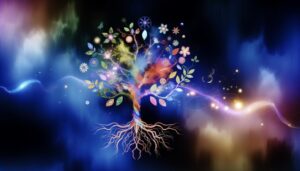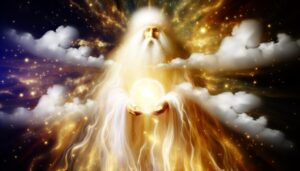What Are the Symbols for the Elements and Their Meanings?
The symbol of the five elements originates from ancient civilizations like Greece, China, and India. In Greek philosophy, Empedocles identified four elements—earth, water, air, and fire—later expanded by Aristotle to include aether.
Chinese philosophy's Wu Xing incorporates wood, fire, earth, metal, and water, focusing on dynamic cycles. India's Pancha Bhoota system consists of earth, water, fire, air, and ether, influencing Ayurvedic and yogic traditions.
Each culture interprets these elements through unique symbols, such as geometric shapes, deities, and colors. These symbols not only depict natural phenomena but also encase deep philosophical meanings.
Exploring further reveals their multifaceted applications.
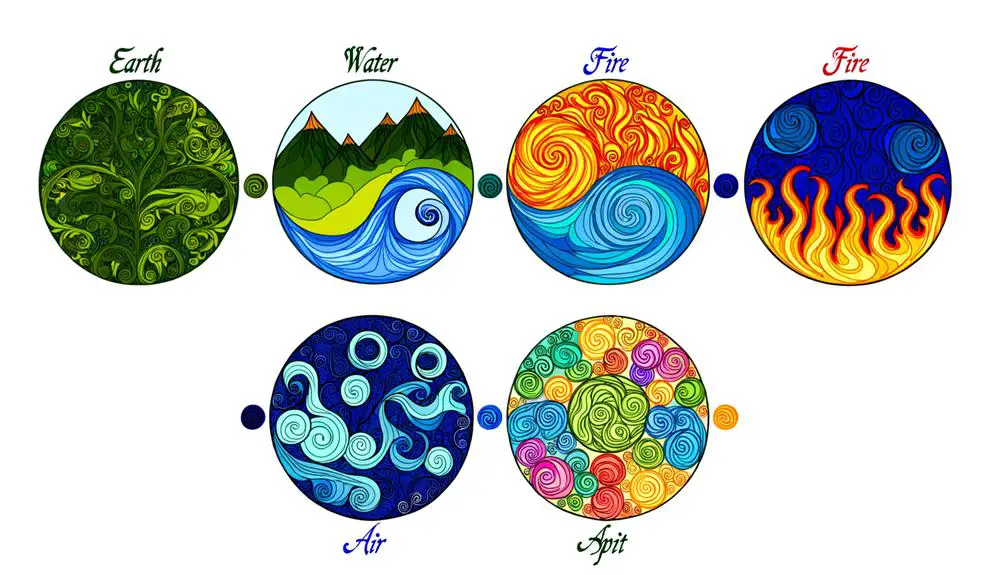
Key Takeaways
- Ancient Greek Philosophy: Simple geometric shapes like the cube for earth and tetrahedron for fire symbolize the elements.
- Hinduism: Deities and intricate geometric diagrams (yantras) are used to represent the five elements.
- Chinese Philosophy (Wu Xing): Wood, Fire, Earth, Metal, and Water are symbolized with specific colors and directions.
- Japanese Culture: Elements of Earth, Water, Fire, Wind, and Void have distinct symbolic representations.
- Spiritual Significance: Elements symbolize fundamental principles of existence and the interconnectedness of life across various cultures.
Historical Origins
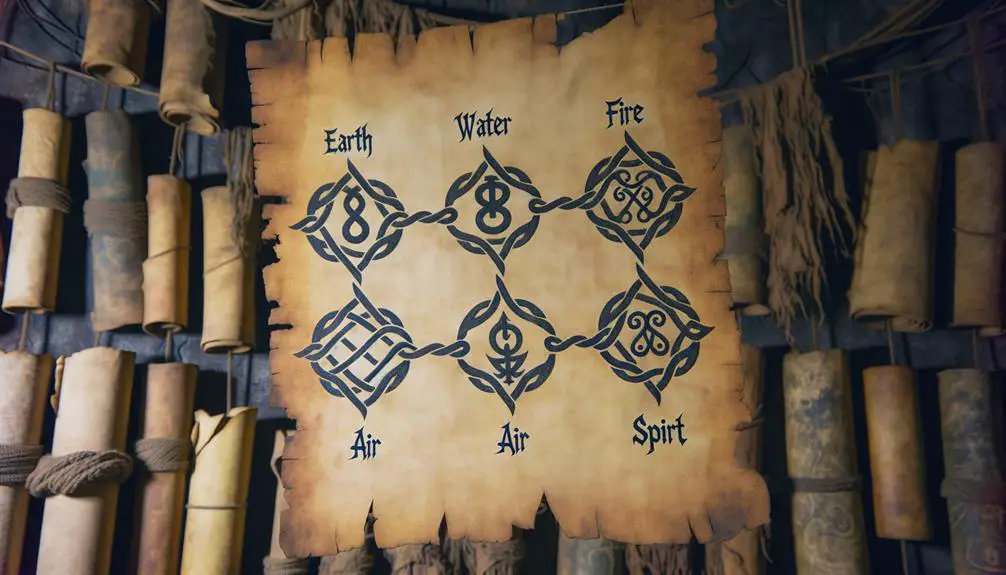
The concept of the five elements, often referred to as the classical elements, traces its origins back to ancient civilizations, with notable references found in the philosophical traditions of Greece, China, and India.
In Greece, Empedocles identified four root elements—earth, water, air, and fire—later expanded by Aristotle to include aether.
Chinese philosophy introduced the Wu Xing, encompassing wood, fire, earth, metal, and water, each representing dynamic phases rather than static substances.
In India, the Pancha Bhoota system comprises earth, water, fire, air, and ether, deeply embedded in Ayurvedic and yogic practices.
These elemental frameworks served as foundational theories in understanding natural phenomena, influencing metaphysics, medicine, and cosmology across these ancient cultures.
Cultural Interpretations
Often, the interpretation of the five elements varies greatly across different cultures, each embedding these elemental principles into their unique philosophical, religious, and practical worldviews. In Chinese philosophy, the Wu Xing encompasses Wood, Fire, Earth, Metal, and Water, emphasizing cyclical patterns and balance. Conversely, in Hinduism, the Pancha Bhoota includes Earth, Water, Fire, Air, and Ether, reflecting cosmic interconnectedness. Greek philosophy outlines Earth, Water, Air, Fire, and Aether, focusing on natural phenomena and metaphysical theories. These cultural variances not only reveal differing elemental categorizations but also underscore diverse existential understandings.
| Culture | Elements |
|---|---|
| Chinese | Wood, Fire, Earth, Metal, Water |
| Hindu | Earth, Water, Fire, Air, Ether |
| Greek | Earth, Water, Air, Fire, Aether |
| Japanese | Earth, Water, Fire, Wind, Void |
These interpretations highlight the profound ways civilizations conceptualize the universe.
Symbolic Representations
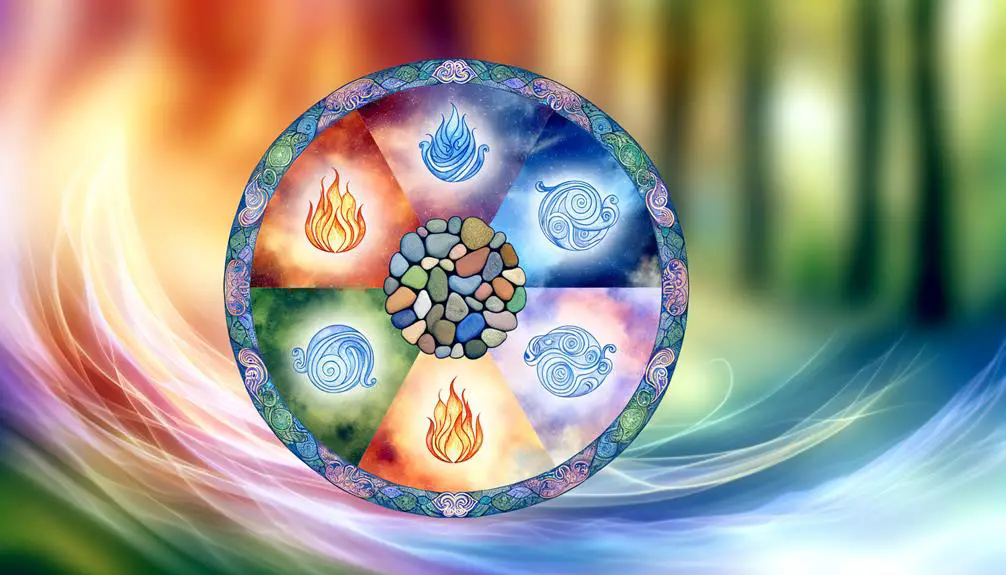
Understanding these diverse cultural interpretations paves the way for examining how each tradition visualizes and symbolizes the five elements, embedding profound meanings in various artistic, religious, and philosophical symbols.
In ancient Greek philosophy, the elements are depicted through simple geometric shapes: earth (cube), water (icosahedron), air (octahedron), fire (tetrahedron), and aether (dodecahedron).
In contrast, Hinduism uses deities and yantras, intricate geometric diagrams, to represent the elements.
Chinese philosophy employs the Wu Xing, five phases symbolized by wood, fire, earth, metal, and water, each associated with specific colors and directions.
These symbolic representations not only highlight cultural uniqueness but also reflect a shared human endeavor to understand and articulate the fundamental components of existence.
Modern Applications
In contemporary times, the conceptual framework of the five elements finds diverse applications across various fields, from environmental science and holistic medicine to modern engineering and digital technologies.
Historically rooted in ancient philosophies, the five-element theory offers a versatile paradigm for understanding complex systems and their interrelationships.
For example, in holistic medicine, these elements inform diagnostic and therapeutic practices.
Environmental scientists utilize this framework to analyze ecological balances and sustainability.
Modern engineering and digital technologies employ elemental principles to innovate and optimize processes.
Spiritual Significance
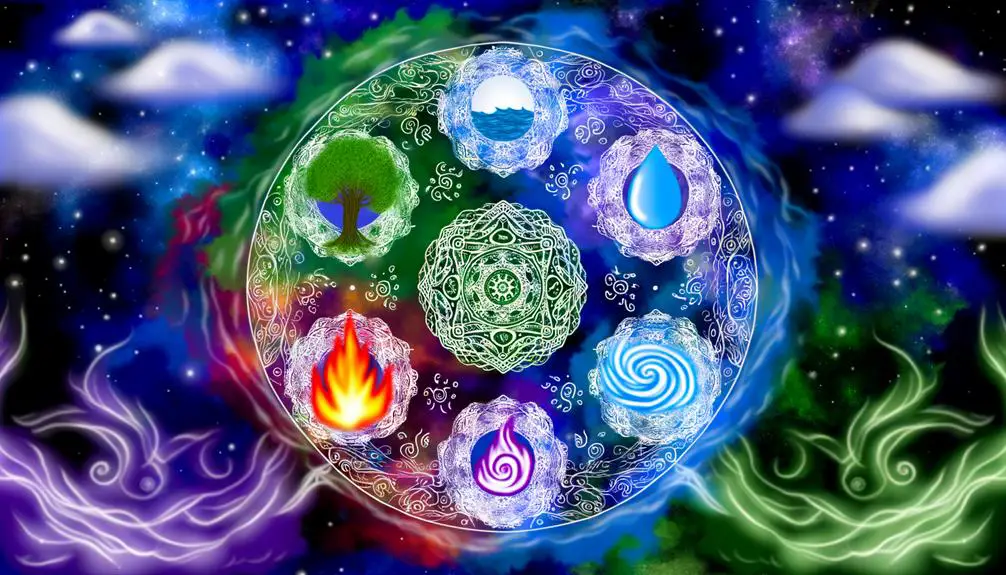
The spiritual significance of the five elements is deeply rooted in various ancient philosophies and religious traditions. They serve as metaphysical symbols representing the fundamental principles of existence and the interconnectedness of all life.
In Hinduism, the elements—earth, water, fire, air, and ether—are seen as manifestations of the divine and pivotal to spiritual practice.
Similarly, in ancient Greek philosophy, these elements were considered the building blocks of the universe, as articulated by Empedocles.
Chinese Daoism also integrates the five elements (wood, fire, earth, metal, water) into its cosmology, emphasizing balance and harmony.
Comparative analysis reveals a universal recognition of these elements as essential to understanding the nature of reality and fostering spiritual growth across cultures.
Conclusion
The symbol of the five elements transcends historical origins, cultural interpretations, symbolic representations, modern applications, and spiritual significance.
From ancient philosophies to contemporary practices, this symbol encapsulates the interconnectedness of nature and existence.
It serves as a bridge between diverse traditions, illustrating a universal quest for balance and harmony.
Through detailed analysis and historical context, the enduring relevance of the five elements is underscored, highlighting their profound impact across different eras and societies.

